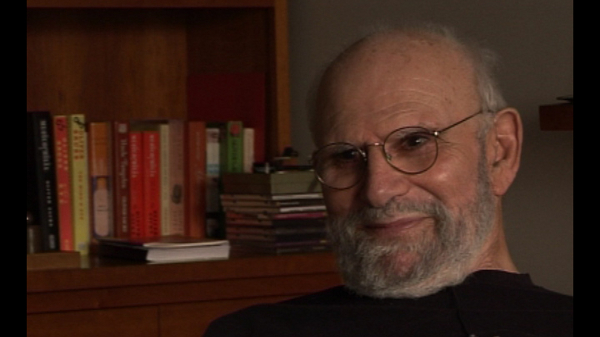NEXT STORY

Supplying clinical data to the great theorists
RELATED STORIES

NEXT STORY

Supplying clinical data to the great theorists
RELATED STORIES


|
Views | Duration | |
|---|---|---|---|
| 181. The case of the colour-blind painter | 1 | 1035 | 06:38 |
| 182. Ralph Siegel | 339 | 01:31 | |
| 183. Collaboration with Ralph Siegel and Bob Wasserman | 298 | 01:52 | |
| 184. How the colour-blind painter saw the world | 1306 | 01:57 | |
| 185. Colour blindness, Isaacson and achromatopsia in Pingelap | 549 | 06:20 | |
| 186. Ralph Siegel's interesting work | 255 | 02:10 | |
| 187. Isolation, feeling unique and visual neuroscience | 2 | 318 | 05:13 |
| 188. Gerald Edelman's work: reinventions and Neural... | 555 | 05:41 | |
| 189. Gerald Edelman's theory of neural Darwinism | 623 | 01:52 | |
| 190. Where is the individual amongst analogies for the brain? | 407 | 01:57 |


There had often been a notion that brain structure was fixed and would develop in a... in a certain way. The term, dedicated or pre-dedicated, was often used, that there would be dedicated modules for... for this and that, whereas Edelman showed very much how... how representations were made on... on the basis of experience. I’m sorry, there’s a thought which was… yes. Implicit in Edelman’s view of the brain is that we are individuals, that we have to do things in an individual way, that we must all forge an individual path, and that we are not automata with programmes. I have been increasingly distressed, I think, over the years, by various analogies for the nervous system. Originally these were telephone analogies, then there were computer analogies, and people would speak of the brain as... as hardware and various programmes in the brain as software, and I wanted to say, yes, but where is the person? I... I don’t think there was the beginnings of a biology of the person, of the individual, whether that’s the individual animal or the individual human being, before Edelman. And this... and this individuation in human beings, of course, extends to the highest level of consciousness, to seeing ourselves, seeing our own autobiographies and our… and where we’re going.
Oliver Sacks (1933-2015) was born in England. Having obtained his medical degree at Oxford University, he moved to the USA. There he worked as a consultant neurologist at Beth Abraham Hospital where in 1966, he encountered a group of survivors of the global sleepy sickness of 1916-1927. Sacks treated these patients with the then-experimental drug L-Dopa producing astounding results which he described in his book Awakenings. Further cases of neurological disorders were described by Sacks with exceptional sympathy in another major book entitled The Man Who Mistook His Wife For A Hat which became an instant best seller on its publication in 1985. His other books drew on his rich experiences as a neurologist gleaned over almost five decades of professional practice. Sacks's work was recognized by prestigious institutions which awarded him numerous honours and prizes. These included the Lewis Thomas Prize given by Rockefeller University, which recognizes the scientist as poet. He was an honorary fellow of both the American Academy of Arts and Letters and the American Academy of Arts and Sciences, and held honorary degrees from many universities, including Oxford, the Karolinska Institute, Georgetown, Bard, Gallaudet, Tufts, and the Catholic University of Peru.
Title: Where is the individual amongst analogies for the brain?
Listeners: Kate Edgar
Kate Edgar, previously Managing Editor at the Summit Books division of Simon and Schuster, began working with Oliver Sacks in 1983. She has served as editor and researcher on all of his books, and has been closely involved with various films and adaptations based on his work. As friend, assistant, and collaborator, she has accompanied Dr Sacks on many adventures around the world, clinical and otherwise.
Tags: Gerald Edelman
Duration: 1 minute, 57 seconds
Date story recorded: September 2011
Date story went live: 02 October 2012